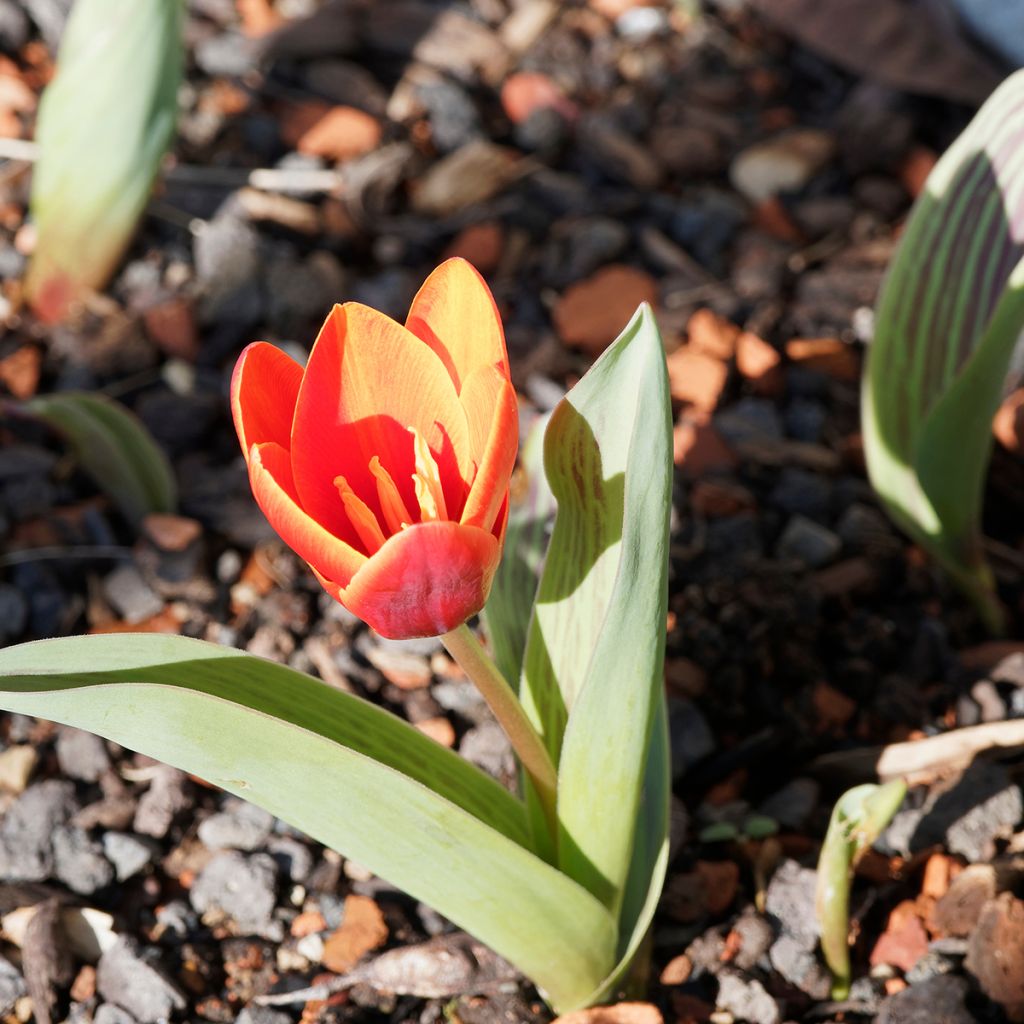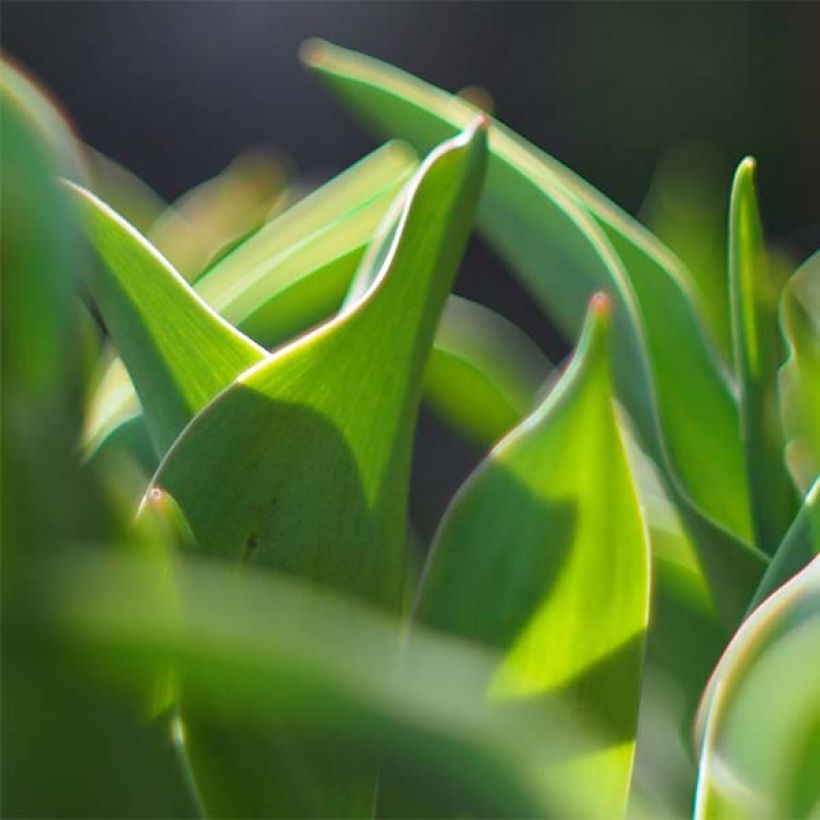

Tulipa Red Riding Hood Double


Tulipa Red Riding Hood Double


Tulipa Red Riding Hood Double
Tulipa Red Riding Hood Double
Tulipa greigii Chaperon Rouge Double
greigii tulip
Not all the bulbs have emerged, but the flower is delightful. Perhaps my border is too dry for it? The leaves with purple patches are also stunning. Revised translation: Not all the bulbs have emerged, but the flower is delightful. Perhaps my border is too dry for it? The leaves with purple patches are also stunning.
Claire, 01/05/2021
Special offer!
Receive a €20 voucher for any order over €90 (excluding delivery costs, credit notes, and plastic-free options)!
1- Add your favorite plants to your cart.
2- Once you have reached €90, confirm your order (you can even choose the delivery date!).
3- As soon as your order is shipped, you will receive an email containing your voucher code, valid for 3 months (90 days).
Your voucher is unique and can only be used once, for any order with a minimum value of €20, excluding delivery costs.
Can be combined with other current offers, non-divisible and non-refundable.
This plant carries a 6 months recovery warranty
More information
We guarantee the quality of our plants for a full growing cycle, and will replace at our expense any plant that fails to recover under normal climatic and planting conditions.

Would this plant suit my garden?
Set up your Plantfit profile →
Description
The Greigii Tulip 'Red Riding Hood Double' is a low-growing variety with large double, bright red flowers which bloom into wide satin corollas on a beautiful green-grey foliage marbled with brown-purple. This flower is one of the first tulips in the garden and creates remarkable patches of colour in the garden, especially when emerging from a carpet of grey foliage. It will have excellent performance in flower beds with a long flowering period, drought-resistant, undemanding, robust and reliable in well-drained soil where it will easily naturalise. Plant the Greigii botanical tulips near your front door or along a main pathway to cheer you up!
The Greigii Botanical Tulip 'Red Riding Hood Double' belongs to the Lily family. It is a very recent horticultural creation, still rarely found for sale. Tulipa greigii species was the first to be cultivated from wild bulbs, after being brought from Uzbekistan to Germany in 1871. It is native to Central Asia and northeastern Iran and has given rise to numerous cultivars, including 'Little Red Riding Hood Double'. This small tulip will not exceed 25 cm (10in) high when in bloom, with its very stout stem elongating over time. Its foliage is slightly greyish green, a little glaucous, very broad, wavy at the edges and beautifully marked with brown and purple spots. The flowers appear in April, earlier or later depending on the climate. They are scarlet to vermillion red, sometimes washed with grey-violet on the outside and shiny. The base of the petals is warmed by a purplish shade. For more than 2 weeks they open under the sun and close when it goes in.
Botanical tulips are robust and do not degenerate over time like many large-flowered tulips. They can naturalise and remain in place for several years without any special maintenance, thriving in borders and rock gardens. To create colourful scenes, they can be associated with various small bulbs: Crocus, Allium moly, Ipheion uniflorum, Anemone blanda, small-flowered Narcissus, Muscari, Puschkinia, Cyclamen coum, Erythronium pagoda, Leucojum vernum, snowdrops, Scilla sibirica... We have planted them near a very compact sage, with light grey evergreen foliage. The sight of their flowers emerging a little more each day from this large silver carpet in March is simply magnificent. These tulips are unmatched for bringing the colours of spring to pots or sunny gardens.
Tulipa Red Riding Hood Double in pictures




Plant habit
Flowering
Foliage
Botanical data
Tulipa
greigii
Chaperon Rouge Double
Liliaceae
greigii tulip
Cultivar or hybrid
Planting and care
Plant the bulbs in autumn, from September to December, at a depth of 10 cm (4in), 10 cm (4in) apart in ordinary, slightly acidic, neutral, or slightly alkaline, loose, well-worked, and well-drained soil. Never add poorly decomposed manure or compost to the planting soil, as this could cause the bulbs to rot. Tulips will grow well in moist to dry soil, in a sunny or semi-shaded location.
After flowering, their foliage becomes unsightly, so recommend planting Heucheras, Tiarellas, Brunneras, Bleeding Hearts or Cypress Spurge, at the front of your flowerbeds. Their foliage will enhance the colours of your tulips, and elegantly conceal their yellowing leaves.
Planting period
Intended location
Care
Planting & care advice
-
, onOrder confirmed
Reply from on Promesse de fleurs
Haven't found what you were looking for?
Hardiness is the lowest winter temperature a plant can endure without suffering serious damage or even dying. However, hardiness is affected by location (a sheltered area, such as a patio), protection (winter cover) and soil type (hardiness is improved by well-drained soil).

Photo Sharing Terms & Conditions
In order to encourage gardeners to interact and share their experiences, Promesse de fleurs offers various media enabling content to be uploaded onto its Site - in particular via the ‘Photo sharing’ module.
The User agrees to refrain from:
- Posting any content that is illegal, prejudicial, insulting, racist, inciteful to hatred, revisionist, contrary to public decency, that infringes on privacy or on the privacy rights of third parties, in particular the publicity rights of persons and goods, intellectual property rights, or the right to privacy.
- Submitting content on behalf of a third party;
- Impersonate the identity of a third party and/or publish any personal information about a third party;
In general, the User undertakes to refrain from any unethical behaviour.
All Content (in particular text, comments, files, images, photos, videos, creative works, etc.), which may be subject to property or intellectual property rights, image or other private rights, shall remain the property of the User, subject to the limited rights granted by the terms of the licence granted by Promesse de fleurs as stated below. Users are at liberty to publish or not to publish such Content on the Site, notably via the ‘Photo Sharing’ facility, and accept that this Content shall be made public and freely accessible, notably on the Internet.
Users further acknowledge, undertake to have ,and guarantee that they hold all necessary rights and permissions to publish such material on the Site, in particular with regard to the legislation in force pertaining to any privacy, property, intellectual property, image, or contractual rights, or rights of any other nature. By publishing such Content on the Site, Users acknowledge accepting full liability as publishers of the Content within the meaning of the law, and grant Promesse de fleurs, free of charge, an inclusive, worldwide licence for the said Content for the entire duration of its publication, including all reproduction, representation, up/downloading, displaying, performing, transmission, and storage rights.
Users also grant permission for their name to be linked to the Content and accept that this link may not always be made available.
By engaging in posting material, Users consent to their Content becoming automatically accessible on the Internet, in particular on other sites and/or blogs and/or web pages of the Promesse de fleurs site, including in particular social pages and the Promesse de fleurs catalogue.
Users may secure the removal of entrusted content free of charge by issuing a simple request via our contact form.
The flowering period indicated on our website applies to countries and regions located in USDA zone 8 (France, the United Kingdom, Ireland, the Netherlands, etc.)
It will vary according to where you live:
- In zones 9 to 10 (Italy, Spain, Greece, etc.), flowering will occur about 2 to 4 weeks earlier.
- In zones 6 to 7 (Germany, Poland, Slovenia, and lower mountainous regions), flowering will be delayed by 2 to 3 weeks.
- In zone 5 (Central Europe, Scandinavia), blooming will be delayed by 3 to 5 weeks.
In temperate climates, pruning of spring-flowering shrubs (forsythia, spireas, etc.) should be done just after flowering.
Pruning of summer-flowering shrubs (Indian Lilac, Perovskia, etc.) can be done in winter or spring.
In cold regions as well as with frost-sensitive plants, avoid pruning too early when severe frosts may still occur.
The planting period indicated on our website applies to countries and regions located in USDA zone 8 (France, United Kingdom, Ireland, Netherlands).
It will vary according to where you live:
- In Mediterranean zones (Marseille, Madrid, Milan, etc.), autumn and winter are the best planting periods.
- In continental zones (Strasbourg, Munich, Vienna, etc.), delay planting by 2 to 3 weeks in spring and bring it forward by 2 to 4 weeks in autumn.
- In mountainous regions (the Alps, Pyrenees, Carpathians, etc.), it is best to plant in late spring (May-June) or late summer (August-September).
The harvesting period indicated on our website applies to countries and regions in USDA zone 8 (France, England, Ireland, the Netherlands).
In colder areas (Scandinavia, Poland, Austria...) fruit and vegetable harvests are likely to be delayed by 3-4 weeks.
In warmer areas (Italy, Spain, Greece, etc.), harvesting will probably take place earlier, depending on weather conditions.
The sowing periods indicated on our website apply to countries and regions within USDA Zone 8 (France, UK, Ireland, Netherlands).
In colder areas (Scandinavia, Poland, Austria...), delay any outdoor sowing by 3-4 weeks, or sow under glass.
In warmer climes (Italy, Spain, Greece, etc.), bring outdoor sowing forward by a few weeks.









































